If you've ever wondered where vegans get their protein, this guide is for you! Learn about the best vegan protein sources and how to include more protein in a plant-based diet.
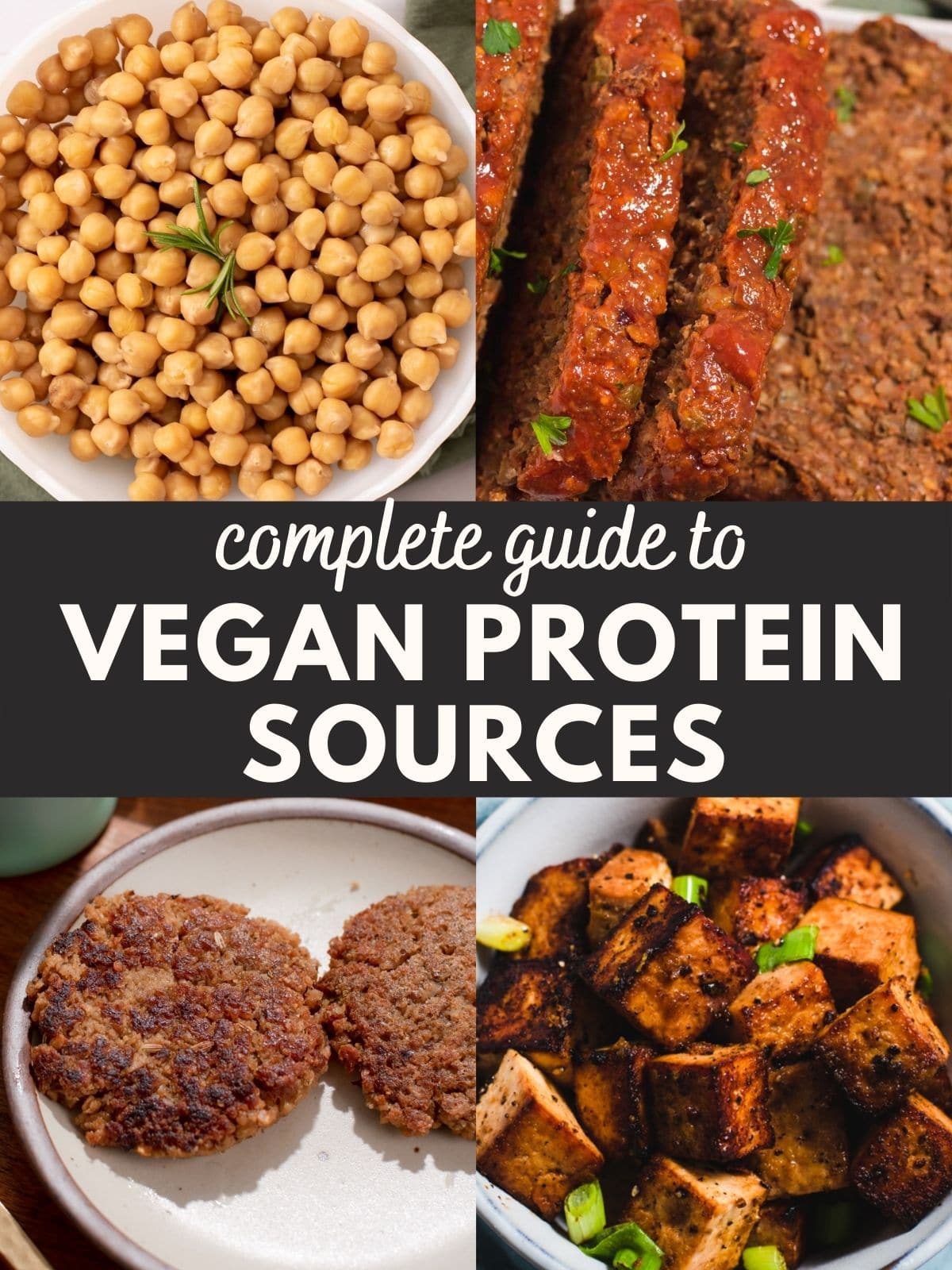
One of the most common questions a vegetarian or vegan is asked is "Where do you get your protein?"
While removing animal products from your diet does take away a number of protein options, there are still many, many nutritious sources of protein left.
Beans, tofu, tempeh, nuts, nut butter, and even faux meats like the Impossible burger or frozen "chikn" nuggets are all great plant-based protein options.
There are great protein sources for every palette, whether you enjoy cooking or prefer to keep out of the kitchen.
This guide will provide you with information on the importance of protein, the best vegan protein sources, and easy tips for including more protein in a plant-based diet.
Jump to:
- Why do we need protein?
- How much protein do I need?
- Are plant-based proteins healthier?
- Faux meats
- Faux meats
- Nuts and seeds
- Legumes
- Soy-based protein
- Grains
- Non-dairy Milks
- Yogurts
- Protein powder
- Tips to increase vegan protein intake
- Recipes high in vegan protein
- Plant-based Protein FAQ
- Wrapping it up
- More nutrition articles
- 💬 Comments
Why do we need protein?
Proteins are called the building blocks of life because they are important in every component of the body. Proteins help build and repair cells, help make enzymes and hormones, and much more.
Inadequate protein intake can lead to muscle wasting, increased severity of infections, and a variety of medical issues.
How much protein do I need?
The USDA recommends 5-6 ounce equivalents of protein per day for adults (1). Foods mentioned in this article are referenced in ounce equivalents, which are roughly 7-10 grams of protein.
Another way to understand recommended daily protein intake is by using the plate method. One-quarter of your plate should be filled with a protein source about the size of your palm, whether that is half a cup of beans or a meatless burger.
The bottom line: Because we are all different sizes and have different energy needs, protein needs vary from person to person. Include a vegan protein source at each meal with grains and vegetables for a well-balanced plant-based diet.
Are plant-based proteins healthier?
Many vegan protein sources are rich in more than just protein. For example, beans provide fiber which promotes gastrointestinal health and tofu contributes non-heme iron which is important for immune system function. Learn more about vegan sources of iron.
Unlike animal sources of protein, foods like beans and some nuts are low or free from saturated fats. Research shows that replacing saturated fats in the diet with polyunsaturated fats, like those found in many plant proteins, can reduce the risk for heart disease (2).
While many vegetables and grains have small amounts of protein, the proteins mentioned in this article are "traditional" protein sources. That means that one-ounce equivalent equals 7-8 grams of protein.
Faux meats
Seitan
2 tablespoons dry vital wheat gluten = 11 grams protein (3)
Seitan is made from wheat gluten, the main protein in wheat. Because of its texture, seitan is used in meat alternatives like "chik'n nuggets" or meatless sausages (aka soy-sages).
You can make your own seitan using vital wheat gluten, like with my vegan Italian sausage recipe. Seitan is available at most health food stores or online.
Textured Vegetable Protein
¼ cup TVP = 12 grams protein
Textured vegetable protein, also known as TVP, is made during the process of making soybean oil. When the oil is extracted from soybeans, the high protein component of the soybean remains. This is called TVP.
Many vegan sausages are made from TVP. It also works well as plant-based beef.
Faux meats
One Tofurkey Plant-Based Italian Sausage = 24 grams protein (20)
From hot dogs to burgers and cheese to eggs, there is a meatless alternative available. Each of these products contains a different amount of protein, with some being very high in protein and others having a scarce amount.
Unlike whole food protein sources, processed meat alternatives often contain higher than recommended amounts of sodium and saturated fat. Enjoy these items in moderation.
Nuts and seeds
Nuts
¼ cup almonds = 6 grams protein (4)
Cashews, almonds, pecans, walnuts, and more provide heart-healthy unsaturated fats and are good sources of vegan protein.
Nuts are great as a snack on their own, as salad toppings, or in homemade vegan cream cheese.
Nut Butters
2 tablespoons peanut butter = 7 grams protein (5)
While peanuts are technically a legume, they often end up in the nut/nut butter category due to taste and texture.
Like whole nuts, nut butter is an easy protein option. Spread almond butter on toast or add a dollop of peanut butter to an apple cinnamon smoothie.
Seeds
¼ cup pumpkin seeds = 10 grams protein (6)
Sunflower seeds, chia seeds, and other seeds also provide their fair share of protein. Seeds make great toppings in salads, smoothies and soups.
You can include sunflower or pumpkin seeds in a kale salad or sprinkle chia or ground flaxseeds in recipes like cherry overnight oats for extra protein and nutrients.

Legumes
½ cup cooked black beans = 7 grams protein (7)
Legumes are a diverse group of food that includes beans, chickpeas, and peas. From black beans and black-eyed peas to lentils and chickpeas, legumes come in a variety of shapes, colors, and sizes.
Legumes are rich in B vitamins and are a good source of plant-based iron. The fiber content in legumes feeds beneficial gut bacteria and promotes satiety, AKA the feeling of fullness.
Choose from a variety of legumes:
- Black beans
- Red, orange and yellow lentils
- Kidney beans
- Red beans
- White beans (such as small white beans or great northern beans)
- Pinto beans
- Navy beans
- Black-eyed peas
- Chickpeas
Canned, frozen, and dry beans are nutritionally equivalent. Canned beans are an inexpensive option but often have additional sodium added.
Pro tip: Look for cans labeled "reduced sodium" or "low sodium", or choose frozen beans for a fuss-free protein source.
Cooking beans from dry takes time, but Instant Pots cook dry beans in as little as an hour. For example:
Legumes are a great addition to soups, salads, and even mushroom meatballs.
Soy and peanuts are also legumes but due to their varied uses, they have their own category.
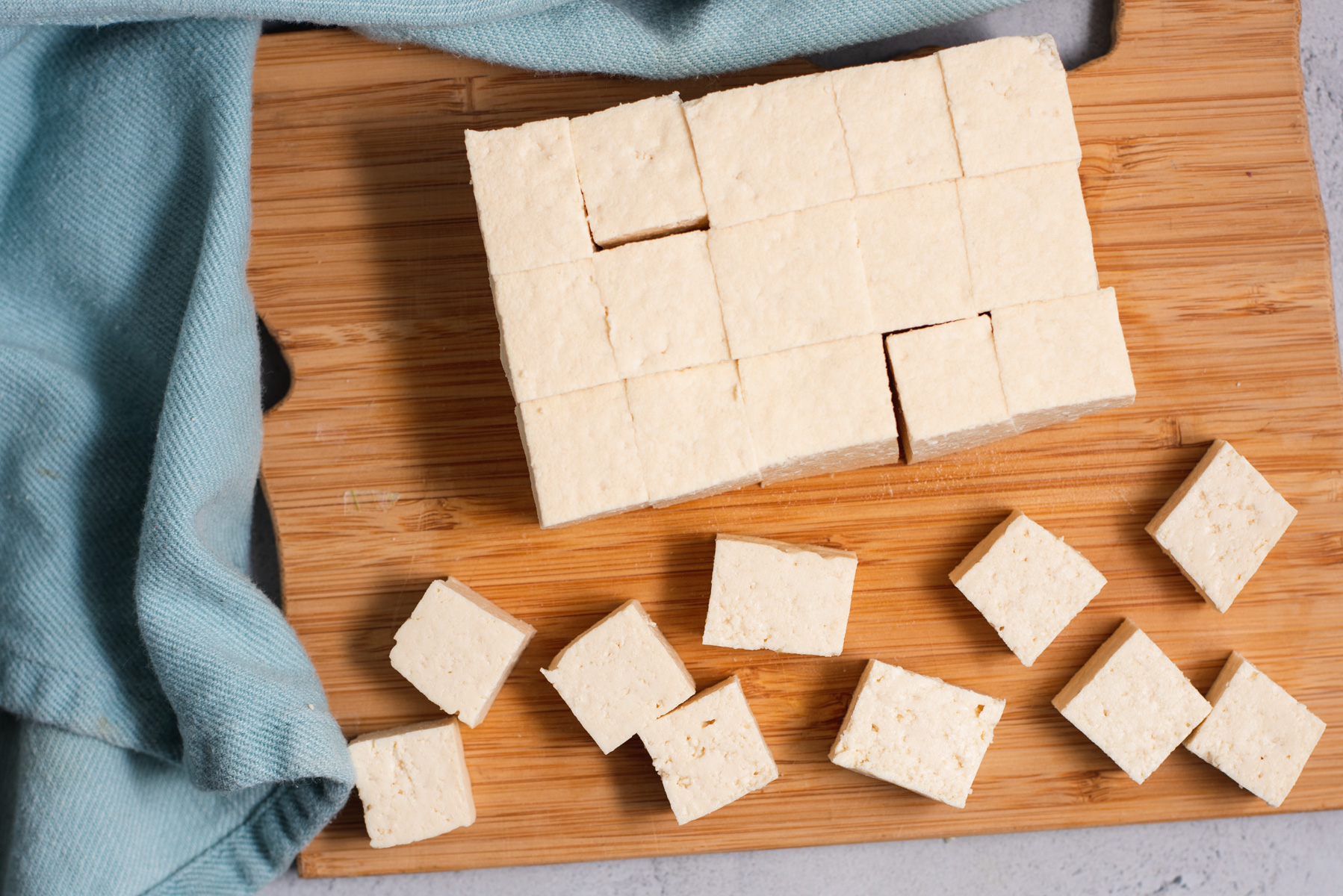
Soy-based protein
Tofu, tempeh, and edamame are all made from soybeans. Soybeans are considered a complete protein, which means that they contain all of the amino acids that the body needs.
Soy is also a good source of iron, is low in calories, and low in saturated fat.
Tofu
3 ounces = 8 grams protein (8)
Tofu is made from soybean curds in much the same way that cheese is made. It is available in silken, soft, firm, and extra-firm varieties.
Tofu has a neutral flavor that makes it a good option as a meat replacement. It easily soaks up sauces and can be made into sandwiches, sauces, and even dips.
Tempeh
¼ cup =8 grams protein (9)
Tempeh is made from fermented soybeans. Because tempeh is fermented, it has a tangier taste than tofu. Fermented foods like tempeh provide beneficial gut bacteria in the form of probiotics.
Because tempeh has a firmer texture than tofu, it works well in meat alternatives like taco meat or vegan bacon.
Edamame
½ cup = 8 grams protein (10)
Edamame is whole, immature soybeans in their pods. Mukimame is edamame with the shell removed. Find both in the frozen section at the grocery store.
Try drizzling edamame with soy sauce and nutritional yeast for a quick and flavorful snack.
Grains
Most grains, such as brown rice and barley, contain small amounts of protein. Grains like teff and spelt container higher amounts of protein.
Spelt
1 cup cooked spelt = 10.7 grams protein (11)
Spelt is closely related to wheat. Spelt flour can be used in baking for a higher protein flour option-- like wheat, spelt contains gluten. Use half regular flour and half spelt flour in baking.
Teff flour
1 cup cooked teff = 9.5 grams protein (12)
Teff flour can also be used in baking and is traditionally used in Ethiopian injera.
Spelt can also be used in dishes in place of rice, barley or similar grains.
Quinoa
1 cup cooked quinoa = 4 grams protein (13)
Quinoa is a popular grain because it is a complete protein, meaning it contains all essential amino acids.
Oatmeal
½ cup dry rolled oats = 5 grams protein (14)
Oats are whole-grain rich in vitamins and minerals, fiber, and carbohydrates. They also contain a good amount of protein for a grain.
Steel-cut oats provide even more protein than traditional rolled oats, with ⅓ cup dry providing 6 grams protein (15).
You can make a protein-packed breakfast by making oatmeal with soy milk instead of water. Stir in your favorite nut butter and pumpkin seeds for an extra satisfying meal.
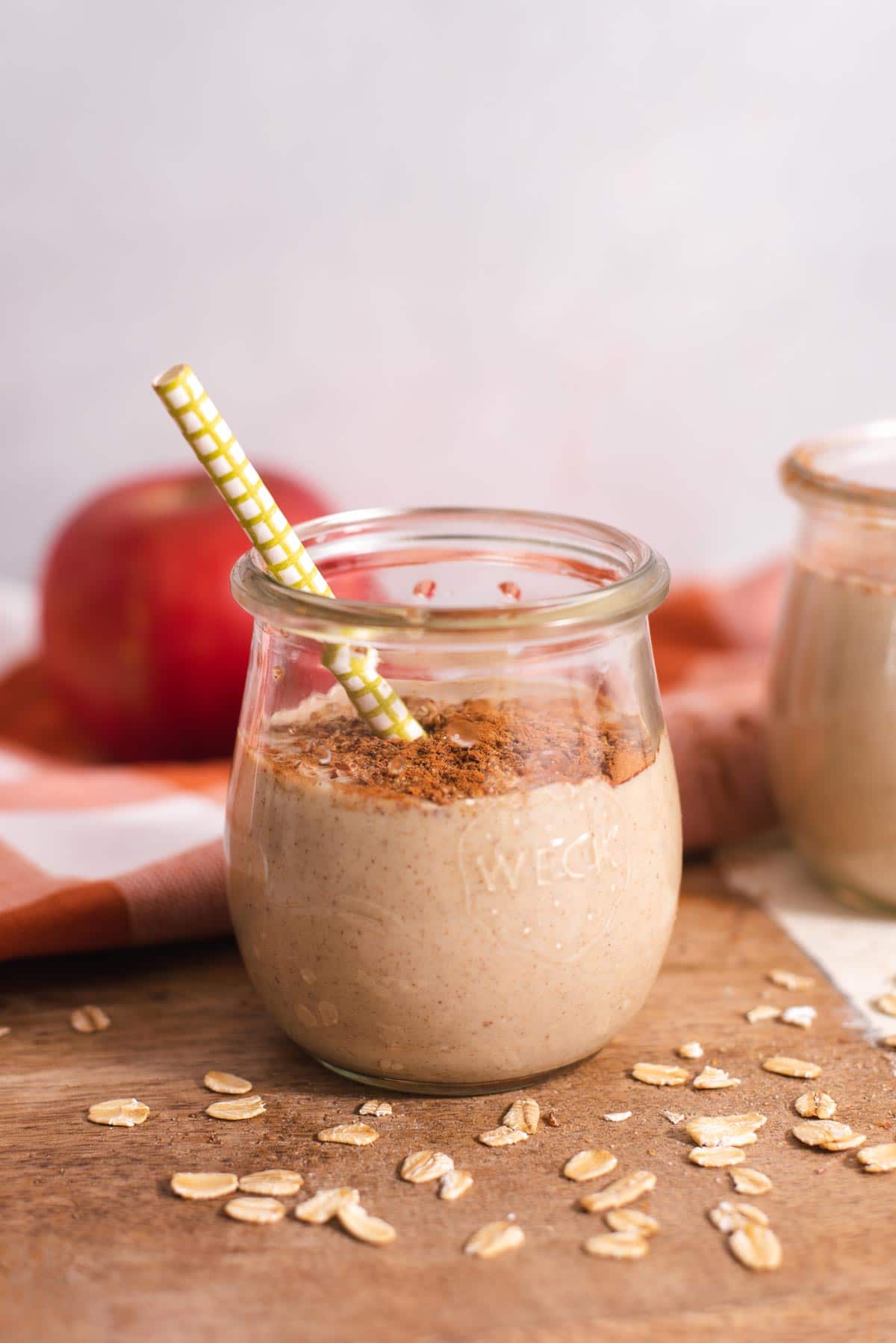
Non-dairy Milks
8 ounces Ripple non-dairy milk = 8 grams protein (16)
Not all nut milk is created equally. Some nut milk is a great source of protein, while others are low in protein. One cup of soy milk provides 6 grams of protein (17), while one cup of almond milk provides only 1-2 grams of protein (18).
There are a variety of milk choices at most grocery stores, from cashew-based to pea protein-based. Check the nutrition label to see how much protein each milk alternative provides.
Yogurts
5-ounce container Silk soy yogurt = 6 grams protein (19)
Like nut milk, not all yogurts have the same amount of vegan protein. Soy yogurt is again one of the best options for plant-based yogurts. Pea protein yogurts contain similar amounts of protein as soy.
Almond, coconut, and oat yogurts usually contain less than 4 grams of protein per serving.
Protein powder
Vegan protein powders come in various forms. They are usually made with soy protein or pea protein. There are a lot of vegan protein powders on the market and they all vary in the amount of protein content.
Protein powder is a good addition to this chocolate banana smoothies and to yogurt. Learn more about the best vegan protein powders.
Tips to increase vegan protein intake
- Add a can of beans to pasta salad
- Top a green salad with chickpea salad or toasted chickpeas
- Make trail mix using nuts, seeds and chex milk
- Combine dates, almonds and strawberries in these Strawberry Almond Energy Ball snack bites
- Simmer tempeh in pasta sauce for an easy source of protein
- Add a tablespoon of nut butter to your smoothie or plant-based yogurt
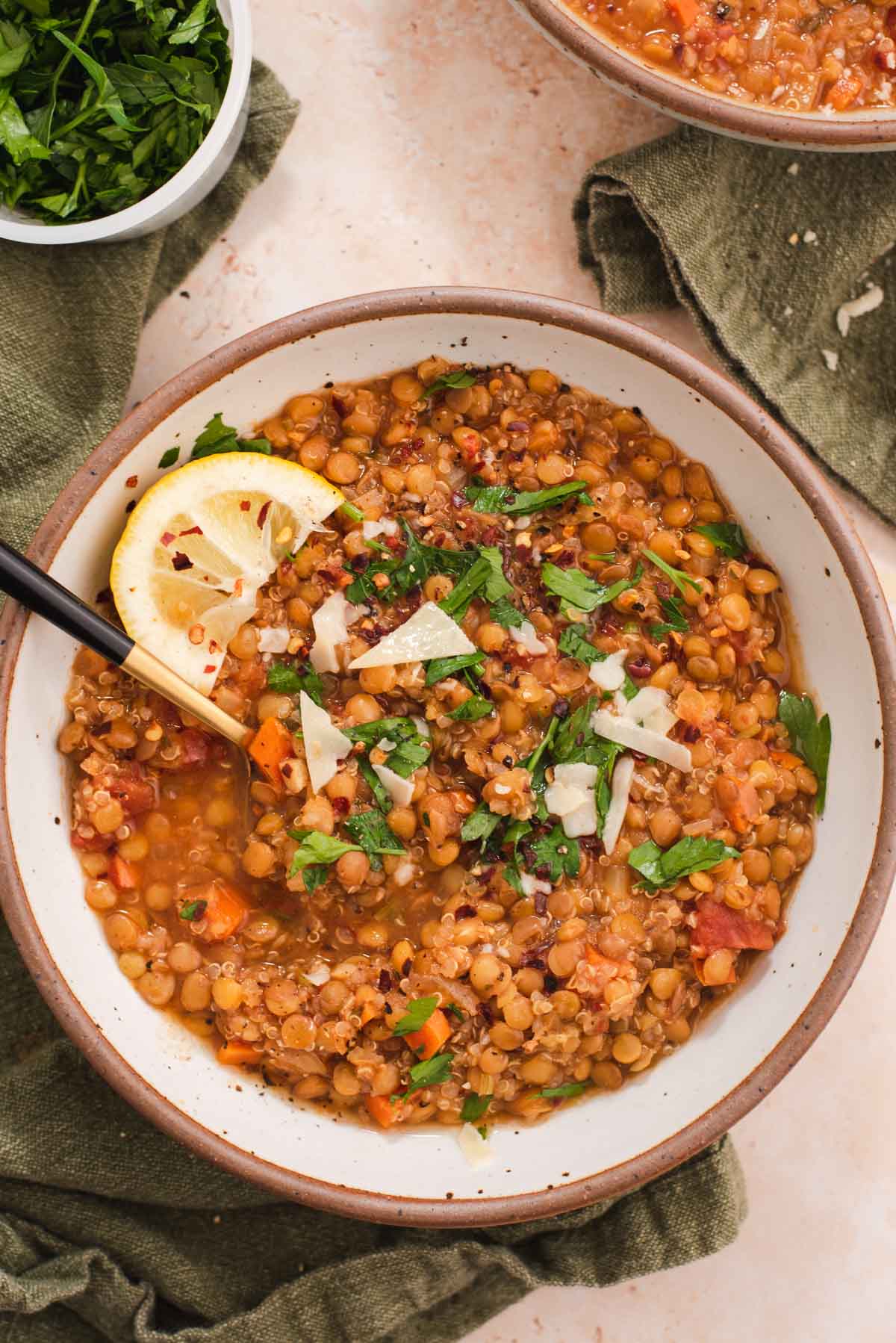
Recipes high in vegan protein
Breakfast
- This Apple Cinnamon Smoothie is made with peanut butter and soy milk and provides 11 grams protein per smoothie.
- Tempeh is the main protein source in this 17 gram protein per serving Vegan Tempeh Hash
- Try this Savory Tofu Scramble in place of scrambled eggs for 9 grams protein per serving
Lunch and Dinner
- Vegan Mushroom Meatballs paired with spaghetti provide 11 grams protein per serving
- A combination of chickpeas and lentils provides over 30 grams protein in this Mixed Vegetable Curry Lentil Curry
- This meal prepable Lentil Salad has 18 grams protein from lentils, chickpeas and hazelnuts
- Easy, creamy Baked Peanut Tofu provides 14 grams protein per serving
Snacks
- Pair Rosemary White Bean Dip or Jalapeno Hummus with veggies for a protein packed snack
- Enjoy these Peanut Butter Breakfast Cookies for more than just breakfast
- Try silken tofu in this Vegan French Onion Dip party appetizer
Plant-based Protein FAQ
Some sources may be higher in protein than others, but there is no single "best" source of vegan protein. Aim for including a variety of protein sources in your diet because different sources have different benefits.
Generally speaking, those on a vegan diet should be able to consume enough protein with whole foods alone. Protein supplements can be beneficial to increase your protein intake, especially if you are on a high protein diet.
A complete protein contains adequate amounts of all 9 essential amino acids. These include quinoa, tofu, buckwheat and hemp seeds.
Wrapping it up
There are many plant-based protein options available in stores, from dry beans to ready-to-eat soysages.
Include protein-rich foods in meals and snacks for energy and increased fullness. Choose a variety of protein-rich foods to benefit from an array of nutrients.
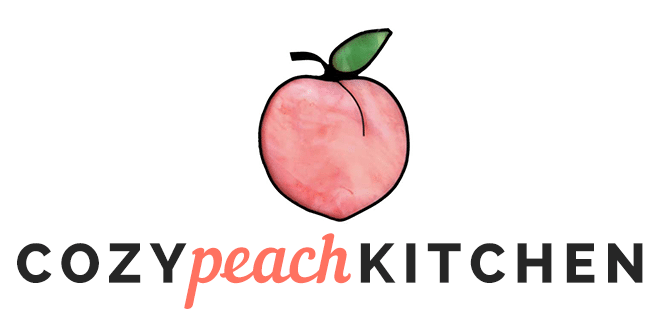

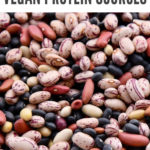
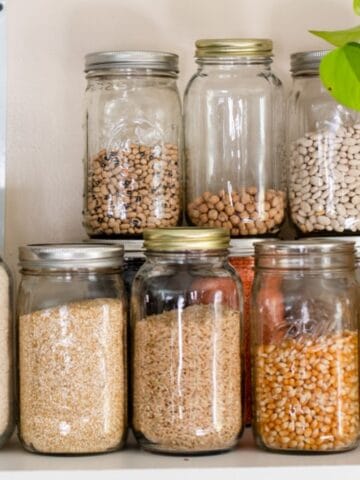
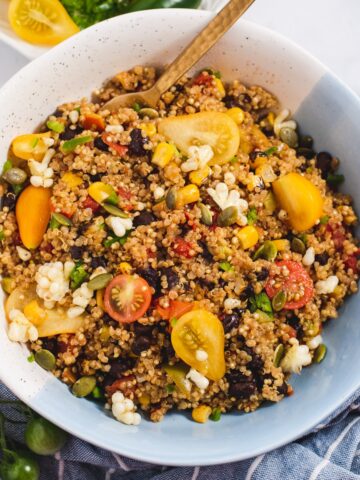
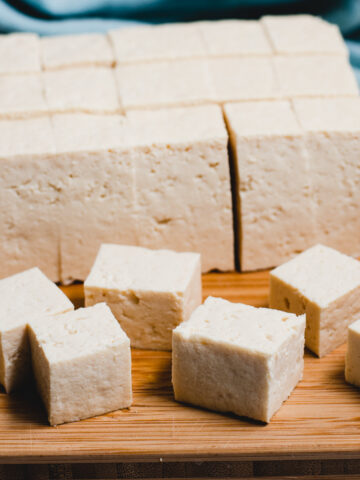
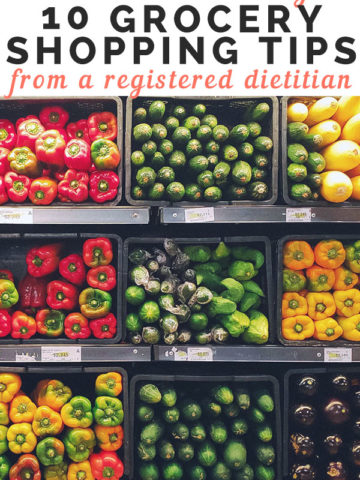
Comments
No Comments